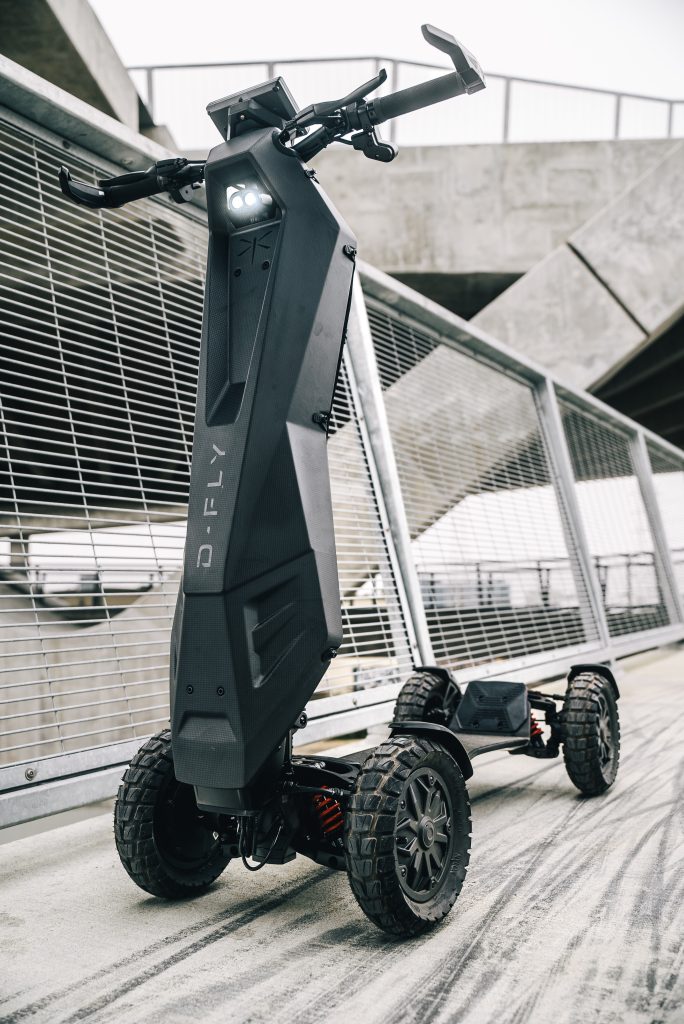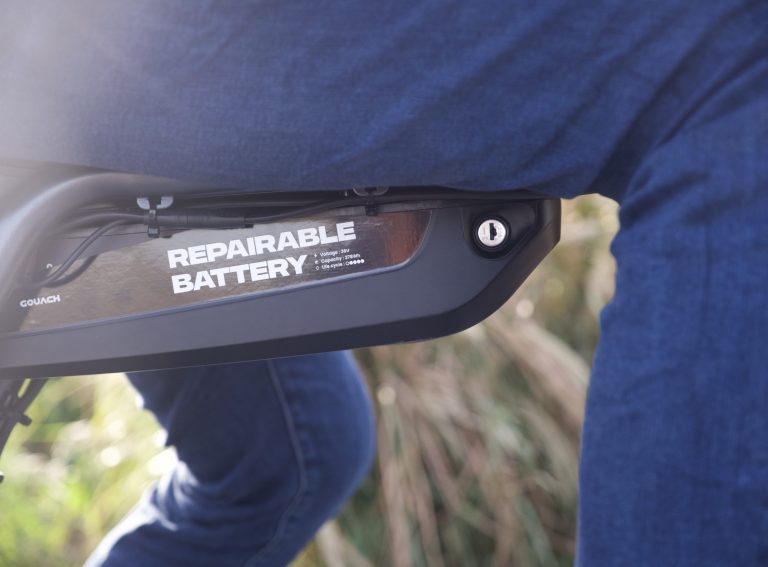The wait is finally over. After five years with their heads down in development, D-Fly has now hit the mass production stage for its first flagship Electric Adventure Sport Vehicle dubbed Dragonfly.
Valued at $3,950, the Dragonfly is priced at the top of the market, but CEO and Founder Jez Williman is making no excuses.
“Our entry level vehicle is valued at $3,950 because it is a premium device made with premium materials,” he explains.
“The Dragonfly is the McLaren sports car of micromobility vehicles. It has four wheels for stability, three forward gears, one reverse gear, a patented 3D full-tilt steering system, three-dimensional navigation system, ABS, onboard cameras, multiple sensors, and a return steering system. It is a precision item that has outstanding longevity.”
This longevity is the result of its design. Each of its 500 components can be replaced and fixed, something the CEO hopes will differentiate the brand from many of the cheaper options.
“All of our components are spare parts, which means users can replace any aspect of the vehicle.
“This is truly unique within our industry, where a lot of vehicles on the market do not last six months. With our vehicle though, it has gone through a world class manufacturing process from design to completion which gives it lifetime value.”
Honing & refining
The process of developing the adventure vehicle has been incredibly detail-oriented, with engineers honing and improving their plans throughout to ensure the final product is of the highest quality.
This included creating the vehicle itself, as well as the range of accessories that drivers can mix and match depending on their preferences and budget.
“We have gone through numerous iterations,” he says.
“But it’s not just a base vehicle that we have built.
“We started with a vehicle and evolved the concept by adding new features. We then introduced One Drive, which enables drivers to use just one thumb. It is similar to what Tesla has developed in allowing drivers to use just one foot, which means that when you release the accelerator the brakes will kick in automatically based on the braking intensity you have selected on the dashboard.”
The effort expended in development has clearly resonated with consumers, with D-Fly already racking up 700 pre-orders valued at $2.1 million.

“Around 70% of our orders have come from the US because we decided that going into multiple countries at once, building fulfilment centres and sorting our legal grounding would be an expensive activity,” Williman says.
“Therefore, our initial focus was on the US, where we have two centres, but we are not shutting off other countries at all. In Europe, we have a fulfilment centre in the Netherlands and have plans for expansion in time.”
Enjoy the ride
A ride on a micromobility vehicle should be a more enjoyable experience than driving a car, with more exhilaration in every journey.
However, Williman believes this feeling is what’s lacking for many products on the market and this is a trend he wants the Dragonfly to correct.
“I just don’t think there is anything cool about most of the other products on the market,” he says.
“The passenger is often passive, and I don’t see how these vehicles will change hearts and minds and make people want to alter their behaviour. Driving the Dragonfly is not just about getting from A to B but making the journey exciting too.”
Research conducted by D-Fly showed that thanks to its 3D full-tilt steering system, this gave users a form of workout that engages the whole body.
“We want to see drivers smiling just like they would if they were snowboarding or wakeboarding. There is also an aspect of physical engagement when you ride one of our vehicles, but without sweating and needing to take a shower afterwards.
“A key pillar of the design process was to change the perception of travelling, from one of anxiety and stress to something that is enjoyable and positive for mental wellbeing.”
Anything is possible
With units set to be distributed over the second half of 2023, eyes have already turned to the future and how D-Fly can get as many people as possible enjoying a ride on the Dragonfly.
“Our focus in the short-term is engaging with our customers as much as possible and getting them to share their experiences,” Williman says.
“We will run activation events to engage people that are enjoying and interested in our products. It is designed from the ground-up for a single human. We know that many people travel alone, so why not use a vehicle designed specifically for that purpose.”
In terms of targets for the business, Williman is ambitious, but also confident D-Fly has developed the product to back up those plans.
“We are planning to achieve around 12,000 to 15,000 run rate by the end of the first year, and endeavour to double that year over year, reaching 25,000 after two years and then 50,000 after three,” he concludes.





